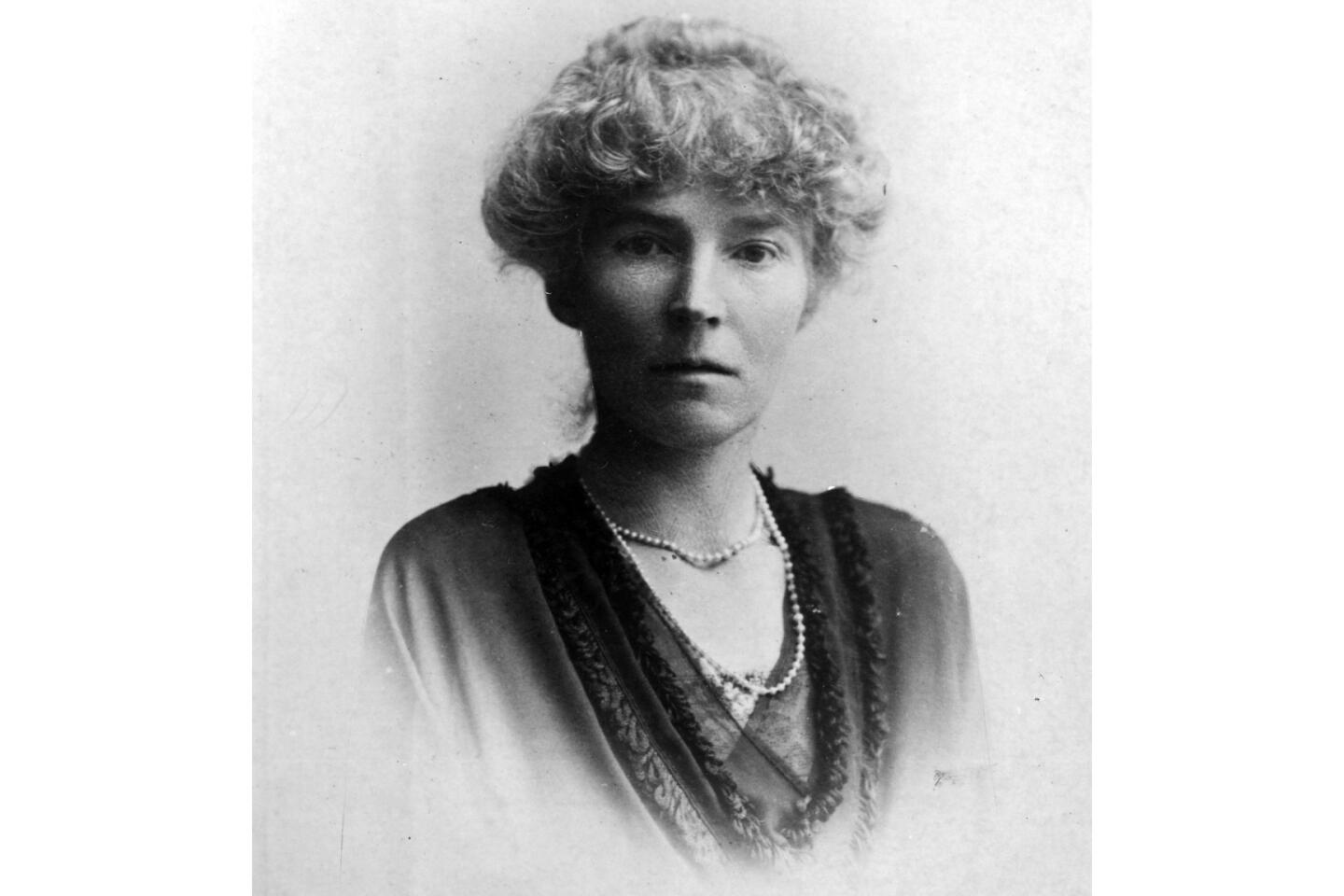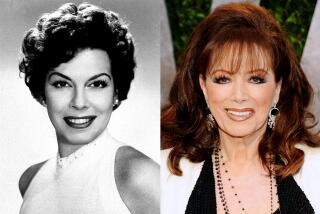True adventures of bold women
- Share via
In my fantasy version of summer, I am sitting on a beach, no schedule or deadlines, a pile of books at my side. There are lovely people for company, a pack of sandwiches and cold lemonade, and there is reading and swimming and more reading. Late in the day someone shows up with a refreshing cocktail, and the next day, we do it again. I know, some people would prefer water skiing or rock climbing, or hiking or scuba diving or riding horses or learning to play in a rock band. Go on, you go have fun; I’ll be here reading. It’s my perfect summer vacation.
------------
FOR THE RECORD:
Gertrude Bell: In the May 31 Summer Books section, an essay about bold women included a 1910 photo of a woman who was misidentified as British adventurer Gertrude Bell. The woman’s identity is unknown. —
------------
Because all those adventures can be found inside a book. For some people, the escape is in a light romance; for others, dark thrillers. This summer what I want are the true stories of ladies who lived bold lives, who were ahead of their time. Here are a few that have fallen through the cracks of history and are ready to be rediscovered.
Summer books: Fiction | Page-turners | Nonfiction | Kids | Lifestyle | Audio
“A Woman in Arabia: The Writings of the Queen of the Desert” by Gertrude Bell, edited by Georgina Howell (Penguin Classics: $17 paper, August): Bell was born in the north of England in 1868 into a family of wealthy industrialists. She was presented at court in 1889 but soon went abroad. She visited Europe, as was common, and Persia, which was less so. During her life, she traveled around the world — twice — but she left her heart in the Middle East. She spoke eight languages, including Persian and Arabic, and trekked across the desert with camels and guides, gifts for the sheiks she met and cameras to photograph (with huge glass slides) her archaeological discoveries.
In “A Woman in Arabia,” editor Howell organizes and explains excerpts of Bell’s voluminous correspondence and diaries to shape our understanding of her curiosities, romances, hazardous journeys and, above all, frame her actions in the complex political maneuverings involved in establishing modern Iraq. Assigned to the Cairo intelligence office in 1915, Bell served as a spy but advocated for local autonomy and argued that schools and hospitals “provided a more convincing form of propaganda than any which could have been invented by the most eloquent preacher or most skillful pamphleteer.” She preceded T.E. Lawrence (of “Lawrence of Arabia” fame) to the Middle East by about a decade, but her story has been overshadowed by his in contemporary culture — though Bell’s story will finally come to the big screen this fall, with Nicole Kidman playing her in Werner Herzog’s “Queen of the Desert.”
Linda Rosenkrantz didn’t go nearly as far from home as Bell, but she was adventurous. In 1965, she and her two best friends went from New York to East Hampton with their bathing suits, a supply of gin and Linda’s tape recorder. Linda recorded their conversations and turned them into “Talk” (New York Review Books Classics: $14.95 paper, July). Published in 1968 as fiction, the book is told in dialogue only, as “Marsha” and “Emily” (both straight) and “Vincent” (gay) flirt, gossip, eat, drink, sunbathe, and discuss art and drugs and one another.
They talk about their relationships and affairs, expose painful histories, and play the would-you-rather game — not-yet-famous curator Henry Geldzahler emerges as the favorite. In many ways, Rosenkrantz and her friends are living a hippie lifestyle before the hippie lifestyle took hold, but they approach it as creative intellectuals. As in the television show “Girls,” there’s a realness to the way they relate to one another and the world, young people who grow so close in their efforts to define themselves as adults that they seem inseparable yet also destined to grow apart. There is something special about their summer, which feels, by the end of the book, that it could never be repeated.
Someone who never ducked the spotlight was Ultra Violet, the artist and Andy Warhol film star. “My rebellion is getting attention from the press and I love it.... If need be I’ll be crazier than the others, bolder, more daring, to keep eyes and cameras focused on me, me, me,” she writes in her memoir “Famous for Fifteen Minutes: My Years With Andy Warhol” (Open Road Media: $14.99 ebook, out now). The book was originally published in 1988, after Warhol had died and when Violet — born Isabelle Collin Dufresne, a French Catholic — had become a Mormon, so she sometimes vents a wry perspective on the narcissism and mad indulgences of Warhol’s world.
But she also remembers it as a fun, fun, fun, creatively electric time. She channels Warhol’s blank deadpan perfectly, sums up his hangers-on in biting vignettes, and captures scene after scene of naked bodies, half-drugged characters and their outrageous stories at the original 1963-67 Factory. Violet is so fascinated by Warhol that she tries seducing him — he flees, terrified — and she portrays his enigmatic magnetism, surrounded by his crew of hangers-on, enablers, casualties and stars. There are cameos, of course, by Bob Dylan, Truman Capote and John Lennon. Violet wouldn’t miss an opportunity to name-drop.
I like to think what each of these women would do if their lives overlapped, interchanged. Bell could have used someone like Rosenkrantz, whose relentless drive toward intimacy might have revealed the truth about the parts of her life that still remain mysterious. What would Violet have done if she hadn’t found herself at Warhol’s factory but on the edge of the Syrian desert? Perhaps Bell, if she were in New York in the 20th century art world, would find it engaging enough — but she’d probably set out for a place less familiar. No doubt they’d all write about the experiences, and I’d be gladly reading about their adventures.
More to Read
Sign up for our Book Club newsletter
Get the latest news, events and more from the Los Angeles Times Book Club, and help us get L.A. reading and talking.
You may occasionally receive promotional content from the Los Angeles Times.










